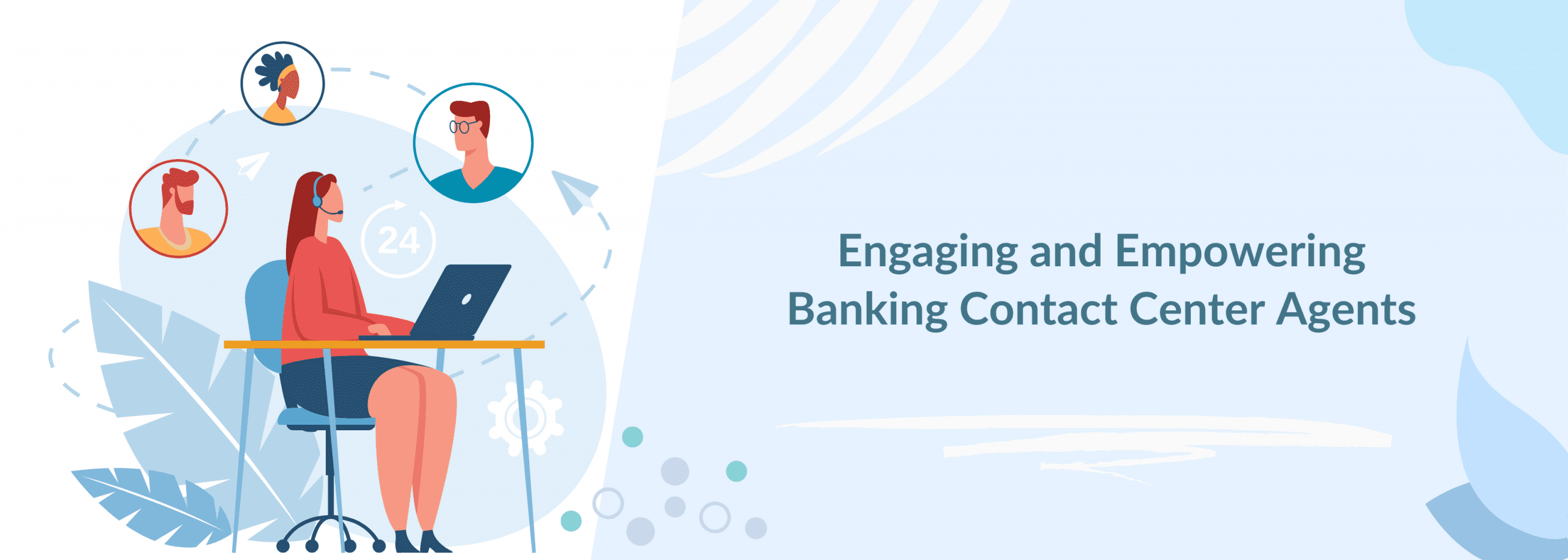Engaging and Empowering Banking Contact Center Agents
Today, consumers are exposed to global brands like Apple, Amazon, and Netflix and are used to their effortless experiences. They have come to expect similar experiences from their banks as well.
There is nothing wrong with it.
The only question is, how do you go about providing them?
Besides, digital technology in banks has allowed consumers to interact with the bank over multiple channels. This makes the operations of the contact centers increasingly complex.
Multiple pieces of research have pointed out that building an effective contact center for banks involved recruiting the right agents, empowering the agents with the right tools, and measuring agent performance metrics.
Besides, the research also points out that 55% of banking customers want proactive relationships with the banks and not transactions. They expect the financial institutions to recommend products or services that can help meet their financial needs. Further, the research states that 67% of millennials expect their experience to be seamless, which is not the case now.
In this article, we will not get into how you go about recruiting the right agents, but we will focus on the right tools and right performance metrics.
Empowering the Agents With the Right Tools
The fundamental aspect of understanding your customer journey is to provide a single view of the customer. It also has to map the customer across all channels and the map should be visible for the agents to make suggestions proactively.
Let me give you a scenario.
You are a customer who has a mortgage loan with your bank, and you have paid the loan for half your term. Currently, you are looking for a personal loan, and you access the loan evaluation tool on the bank’s mobile app.
As a customer experience function, you have access to the existing relationship with the customer on the mortgage loan as well as the recent mobile app interaction on personal loans.
Your outbound loan products division reaches out to the customer with this data. It suggests that the customer can top up the existing mortgage loan itself, and he doesn’t have to go through the application for a personal loan for his financial needs. This does not require additional paperwork apart from providing consent and signing the extended agreement.
This is a classic example of offering a proactive customer experience.
Here, you have converted the customer data into insights and actions. This allows you to move away from transactions to offering personalized recommendations to your customers.
Measuring the Performance With the Right Metrics
Now that you have empowered your agents with the right tools, how do you measure how well are they performing?
Tradition metrics include average handle time, first call resolution, sales conversion, customer satisfaction, and net promoter scores.
How valid are these performance metrics in today’s omnichannel banking environment?
The metrics like average handle time and first call resolutions may not go away, and they are still relevant for transactional queries. However, in a proactive customer-focused environment, these two metrics should be done away with for measuring the call center agents’ performance.
However, customer experience metrics like CSAT and NPS scores are very relevant in measuring the performance of complex queries.
Often, contact centers route the complex calls to the respective functional teams after the initial interaction with the agents. The customers don’t have to repeat their conversation with the functional teams again with the right tools that capture customer interactions.
To sum up, agents need to have a unified view of the customer journeys and actions across channels, such as providing visual maps of customer actions.
This would move your contact center from transactions to relationships. This would be a win-win for both the bank and its customers. Tracking the right performance metrics will ensure that the contact center performs to its optimum and generates more revenues from its customer interactions.
